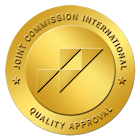When it comes to mental health, navigating the complex world of diagnoses can be overwhelming, especially when two conditions like Borderline Personality Disorder (BPD) and Bipolar Disorder are so often misunderstood. Both can lead to intense emotional shifts, but the root causes, symptoms, and treatments can vary significantly. So, what really sets them apart? If you’re someone who’s been grappling with these conditions or you’re seeking answers for a loved one, understanding the nuances of BPD vs Bipolar Disorder can be the first step toward better managing your mental health.
At Crestview Recovery in Portland, Oregon, we’re dedicated to providing a safe space for individuals to explore and understand their mental health challenges, including those related to mood disorders like BPD and bipolar disorder. Whether you’re just starting your journey toward recovery or have been struggling for some time, our expert team is here to provide compassionate care, personalized treatment, and a path to healing.
What are the Differences between BPD and Bipolar Disorder?
Understanding the differences between Borderline Personality Disorder (BPD) and Bipolar Disorder is essential for choosing the right approach to treatment and care. While both conditions involve intense mood swings, they have distinct causes, symptoms, and treatment methods. By recognizing these differences, individuals can make more informed decisions about their care and seek the right support, including options like bipolar disorder treatment when appropriate.
BPD, or Borderline Personality Disorder, is a personality disorder marked by long-standing patterns of instability in relationships, self-image, and emotions. People with BPD experience rapid and intense mood swings, often triggered by interpersonal stressors, which can last anywhere from a few hours to a day. Core features include a deep fear of abandonment, unstable relationships, impulsivity, self-harm behaviors, chronic feelings of emptiness, and intense anger.
Bipolar Disorder, on the other hand, is a mood disorder characterized by distinct episodes of mania (or hypomania) and depression. Unlike the mood swings in BPD, which are often triggered by external events, bipolar episodes can last from several days to weeks. During manic episodes, individuals experience elevated mood, increased energy, and impulsive behavior, while depressive episodes bring low mood, fatigue, and a loss of interest in activities.
Causes and Risk Factors

While both disorders can be influenced by a combination of genetic, environmental, and biological factors, their underlying causes differ, which affects how they are managed and treated.
- Genetic Factors: Research suggests that BPD may run in families, indicating a hereditary predisposition. However, genetics alone does not determine the disorder’s development.
- Environmental Factors: Early life experiences are considered some of the strongest predictors of BPD. A history of childhood trauma, such as emotional or physical abuse, neglect, or chronic invalidation, is commonly reported among individuals with BPD. These early disruptions can impair the development of emotional regulation and a stable sense of self.
- Brain Function: Studies using brain imaging have found structural and functional differences in areas such as the amygdala (involved in processing emotions) and the prefrontal cortex (responsible for impulse control and decision-making). These irregularities may explain the intense emotional reactivity and difficulty with self-control often seen in BPD.
- Genetic Factors: Bipolar disorder has one of the strongest genetic links among psychiatric conditions. Individuals with a first-degree relative (parent or sibling) diagnosed with bipolar disorder are at significantly greater risk. Twin studies have demonstrated high concordance rates, underscoring the significant role of inherited factors.
- Biological Factors: Bipolar disorder is closely tied to neurochemical imbalances, especially involving dopamine, serotonin, and norepinephrine—neurotransmitters that regulate mood and energy levels. Additionally, structural changes in the limbic system and prefrontal cortex may contribute to the cyclical mood swings between mania and depression.
- Environmental Triggers: While genetics and biology create the foundation, external stressors can influence the timing and severity of episodes. Events such as trauma, relationship breakdowns, major life transitions, sleep disturbances, and substance use can trigger or worsen manic or depressive episodes, particularly in those already predisposed.
Diagnosis and Treatment

Proper diagnosis and treatment are essential for managing both BPD and Bipolar Disorder. Here’s how healthcare professionals assess and approach each condition:
Borderline Personality Disorder (BPD)
BPD is diagnosed through a comprehensive psychiatric evaluation, which includes interviews with the patient, their family, and a review of medical history. According to the DSM-5, a person must meet at least five of the following criteria:
- Intense fear of abandonment
- Unstable relationships (idealization and devaluation)
- Identity disturbance (unstable self-image or sense of self)
- Impulsivity (e.g., spending, substance abuse, unsafe sex)
- Suicidal behavior or self-harm
- Emotional instability (mood swings)
- Chronic feelings of emptiness
- Difficulty controlling anger
- Stress-related paranoia or dissociation
These criteria help healthcare professionals assess the severity of BPD. Treatment primarily involves psychotherapy, especially Dialectical Behavior Therapy (DBT), which focuses on mindfulness, emotional regulation, and interpersonal effectiveness. Medications like antidepressants or mood stabilizers may be prescribed for co-occurring symptoms, and hospitalization may be necessary in severe cases.
Bipolar Disorder
Bipolar disorder is diagnosed through clinical evaluation, including interviews with a psychiatrist and a review of symptoms. Diagnosis is based on the DSM-5 criteria, which include the following mood episodes:
- Manic Episode: A period of elevated or irritable mood lasting at least one week, with symptoms like grandiosity, decreased need for sleep, talkativeness, flight of ideas, distractibility, and risky behavior.
- Hypomanic Episode (for Bipolar II): Similar to mania but less severe, lasting at least 4 days.
- Depressive Episode: Characterized by low mood, fatigue, loss of interest, feelings of worthlessness, and suicidal thoughts.
Treatment for bipolar disorder involves mood stabilizers like lithium, anticonvulsants, and atypical antipsychotics to regulate mood swings. Antidepressants may be used for depressive symptoms, but are combined with mood stabilizers to prevent mania. Psychotherapy, including Cognitive Behavioral Therapy (CBT) and Interpersonal and Social Rhythm Therapy (IPSRT), helps manage the symptoms. Regular sleep and stress management are essential, and hospitalization may be required during severe episodes.
Impact on Relationships

Living with mental health conditions like BPD and bipolar disorder can deeply affect how we connect with others. The challenges of emotional fluctuations, impulsive actions, and shifting moods can strain personal and professional relationships
Individuals with BPD frequently experience their relationships as turbulent and unpredictable. Intense highs and lows can lead to idealizing someone one moment and feeling disconnected or angry with them the next. A constant fear of being abandoned – whether real or imagined – may lead to desperate attempts to prevent any separation, which can be exhausting for both parties involved. The emotional instability and impulsive behaviors that come with BPD can create a turbulent environment, making it challenging to maintain stable, healthy relationships.
In the manic phase of bipolar disorder, individuals may engage in risky, impulsive behaviors, causing rifts or conflict in relationships. Whether it’s overspending or speaking without thinking, manic episodes can drive a wedge between loved ones. Conversely, withdrawal is common during depressive episodes. The lack of energy or desire to communicate can create distance, leaving partners, friends, or family feeling isolated and unsure of how to connect. These shifts make sustaining healthy relationships especially challenging.
Co-occurrence: Can You Have Both?
Yes, it’s possible to have both BPD and Bipolar Disorder simultaneously, a condition sometimes referred to as “borderpolar.” Approximately 10–20% of individuals with bipolar disorder also meet the criteria for BPD. This combination of diagnoses can make treatment more complex and necessitate a personalized therapeutic strategy.
The overlapping symptoms, such as mood swings, impulsivity, and emotional instability, can make it challenging to distinguish one disorder from the other. As a result, individuals with “borderpolar” may face unique struggles that require careful and nuanced treatment to address both conditions effectively. This highlights the importance of comprehensive, individualized care in managing symptoms and enhancing overall quality of life.
How to Talk to a Loved One About Mental Health Struggles
Talking to a loved one about mental health, especially with BPD or Bipolar Disorder, requires choosing the right time and place. Approach them when calm, and respect their need for space if they’re not ready to talk.
Listen with empathy, validate their struggles, and ask open-ended questions, such as “How can I help?” Patience is key as emotions may fluctuate, and setting boundaries helps maintain a healthy dynamic.
Offer specific support, like helping with tasks or attending appointments, and educate yourself about their condition. Validate their emotions and encourage them to seek professional help when appropriate. Lastly, take care of yourself as a caregiver by seeking support when needed, ensuring you can maintain a healthy balance.
For individuals managing both mental health and substance use concerns, a dual diagnosis treatment facility provides integrated care to address all conditions simultaneously, offering comprehensive support for recovery.
Seeking Help in Portland, Oregon at Crestview Recovery

Crestview Recovery in Portland, Oregon, offers specialized treatment for mood disorders, including BPD and Bipolar Disorder. With personalized therapy and medication management, we address the unique challenges of each individual, supporting you through rapid mood swings and prolonged episodes. Our comprehensive approach helps you manage symptoms and work toward recovery, guiding you toward better mental health.Contact us today to get started.
































